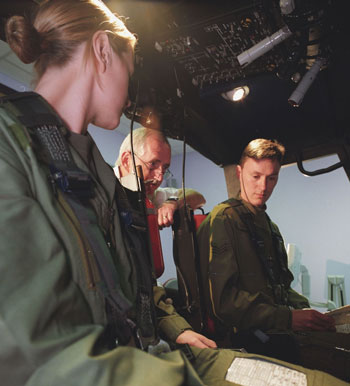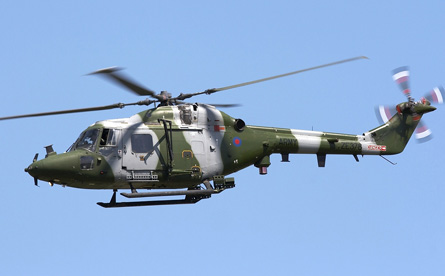The British Army is making increased use of simulation to support pre-deployment training for Westland Lynx AH7/9 helicopter crews prior to their departure for operations in Afghanistan and Iraq.
Around 20-30% of the current capacity on the service's lone Lynx simulator is now being allocated for pre-deployment activities, says Jim Lawton, training service manager for the Thales Lynx Aircrew Training Service (LATS).
In use at the School of Army Aviation in Middle Wallop, Hampshire since 2001, the LATS system is provided under a 25-year private finance initiative deal dubbed Thales Eagle. The arrangement has an optional break-point in 2013 around the time that the army expects to retire the last of its current Lynx airframes and transition to operations using 40 new AgustaWestland Future Lynx.
The Lynx full-mission simulator has delivered all the army's synthetic conversion, currency and pre-deployment training activities since a second device was decommissioned at its Wattisham base in Suffolk last March.
The LATS is contracted to deliver up to 12h of training a day - typically representing nine sorties each of 75-90min duration, for a maximum of 2,800h a year. A further 1,000h of training is delivered a year using a cockpit procedural trainer (below), with computer-aided instruction also employed. The system is run by a staff of 14, including six ex-military instructors and six engineers.
 |
|---|
© Thales |
"We are a training establishment first and foremost," says Lawton, who adds: "we expect to use all our hours next year." The PFI deal also includes an option to surge by a further 700 simulator hours a year if required.
The bulk of the system's use is assigned for conversion courses, with each lasting 14 weeks and requiring 36 simulator sorties per student. Pre-deployment training requires each pilot to fly three 90min sorties a day over a three-day course, in which the army also provides secret-level briefings on threat systems in theatre.
 |
|---|
© Berniec gallery on flightglobal.com/airspace |
Running Thales View graphics, the FMS has four UK visual databases and others representing Kuwait and Belize. It can also be used to prepare crews for operations using night-vision goggles, while its communications equipment will be upgraded by mid-2009 to match the theatre-entry standard for those aircraft deployed on operations.
The UK Ministry of Defence's army and Royal Navy Lynx helicopters fly 30,000h per year, including some 6,000h on frontline operations.
Source: Flight International























